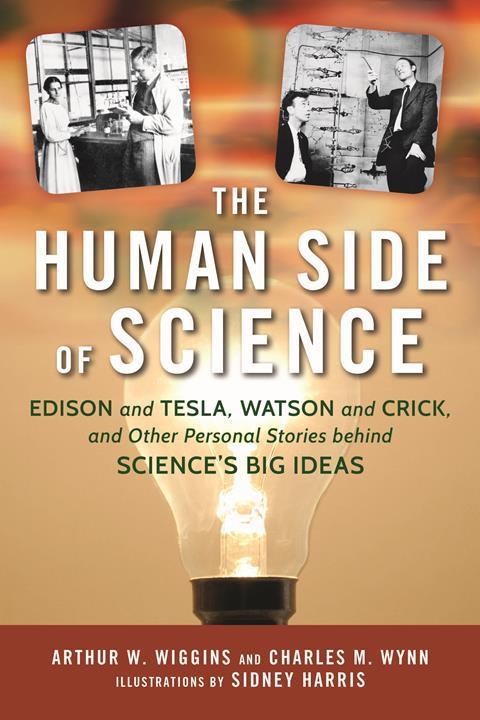Arthur Wiggins and Charles Wynn
Prometheus Books
2016 | 275pp | £17.30
ISBN 9781633881563
Buy this book from Amazon.co.uk

The human side of science is an account of significant developments in science with an emphasis on the people involved. The book is bookended with disputes and competition, from an argument between Democritus and Aristotle over the existence of atoms in ancient Greece to Craig Venter and Francis Collins’ race to sequence the human genome in the 1990s. On the journey, Arthur Wiggins and Charles Wynn cover such subjects as Newton, Hooke and Leibniz on motion and calculus; Mendeleev, Meyer and Moseley on the periodic table; Wegener on continental drift; and Wilkins, Franklin, Watson and Crick on the structure of DNA. It thus draws from all branches of science.
The book lacks an overarching theme. Not all of these scientific advances involved jealousy or strained relations. Some arose from helpful and open collaboration, with insights shared by various scientists in timely fashion. In other words, the book describes the full range of human possibilities. Of course, science is a human activity and arises from the insights and interactions of flawed individuals. The book makes this clear, though the insight is hardly original.
The style is lively and interesting, though. It has 14 chapters and one section of 10 mini-chapters, with additional information available on a related website. There are numerous illustrations, including several engaging cartoons by Sidney Harris.
Overall, I enjoyed this book. It would certainly provide an array of examples for anyone teaching introductory courses in science at a school or university who wants to alert their students to how science is really done. This book might even set some of them on the path to become a bona fide historian of science. Either way, it makes for interesting reading and I recommend it.












No comments yet